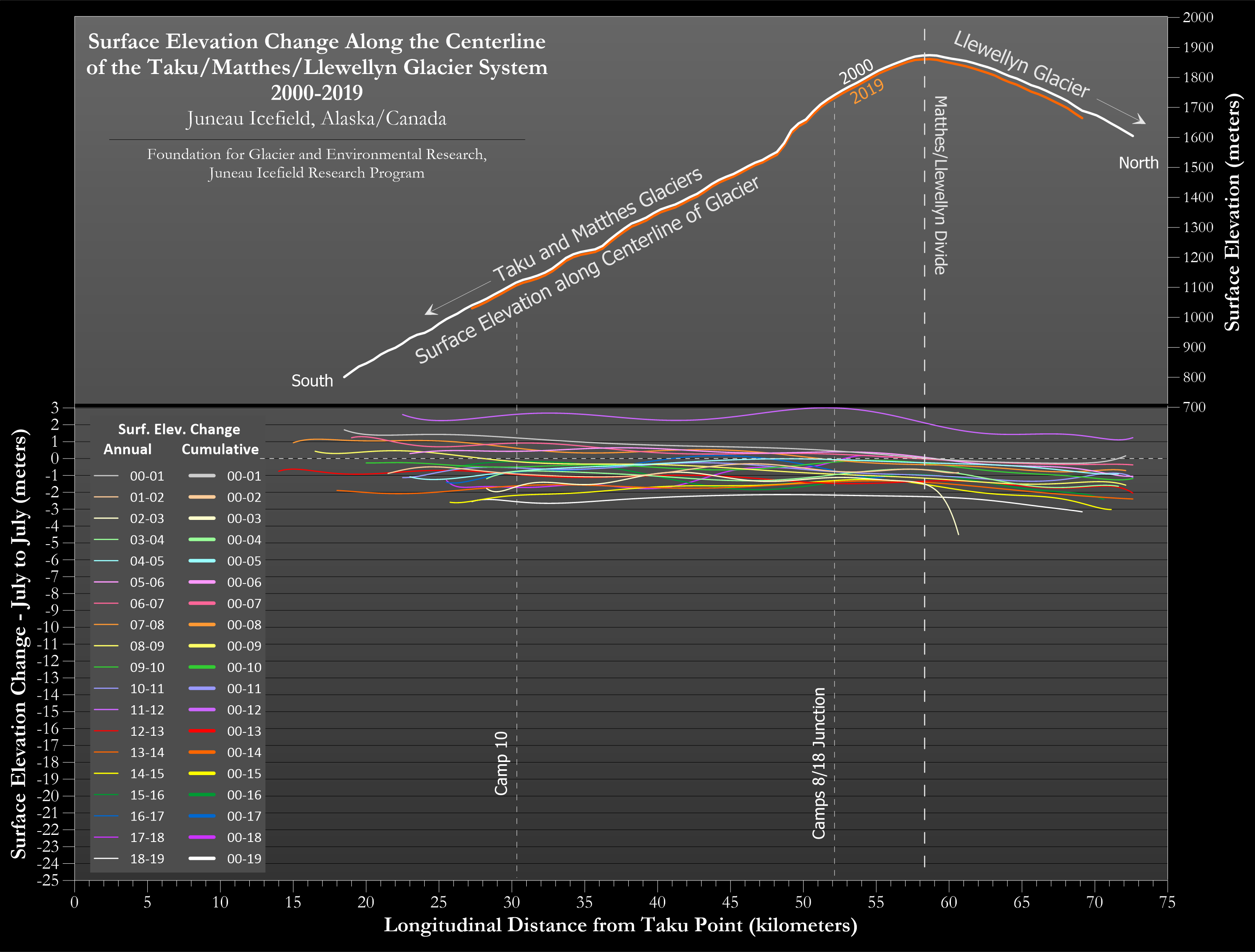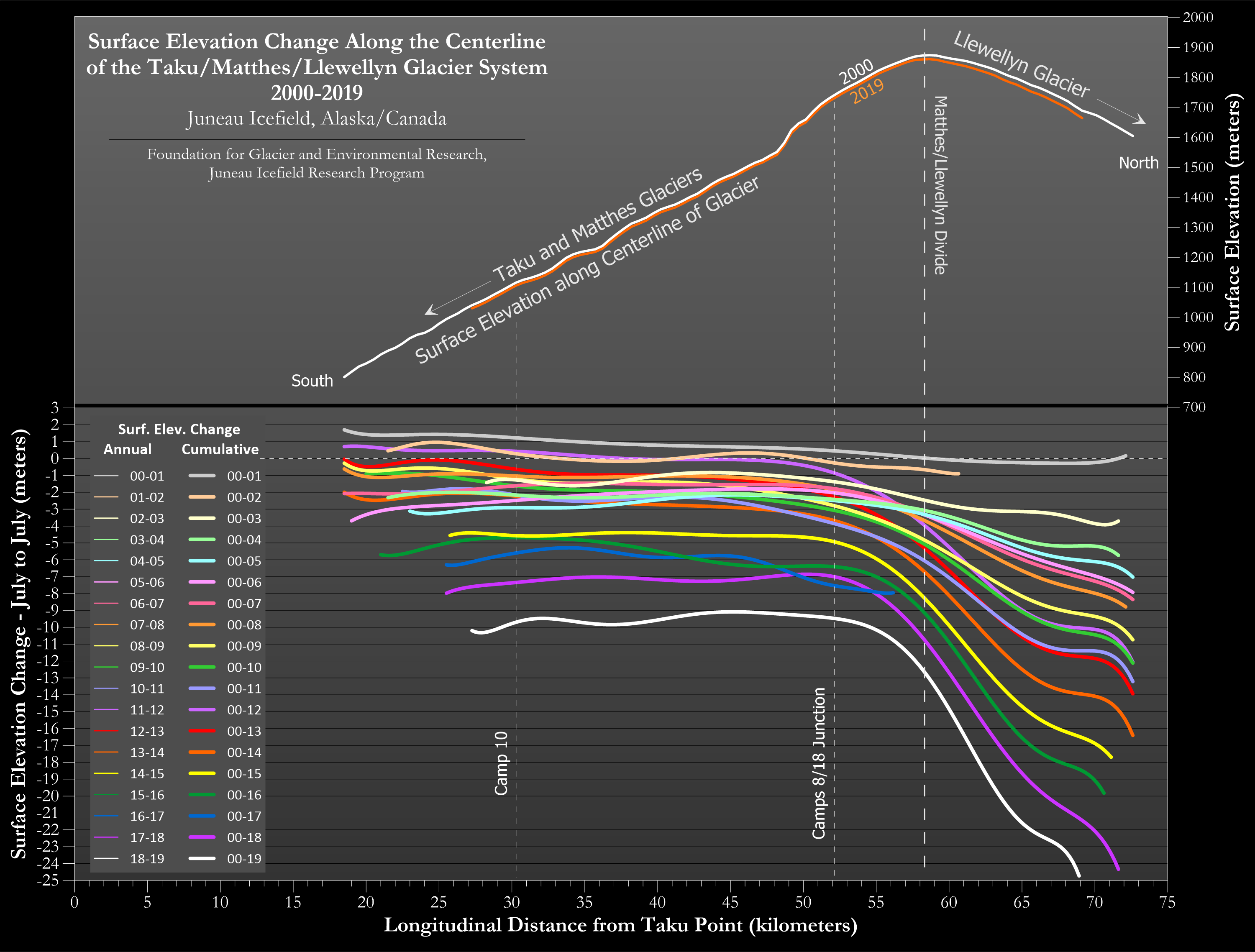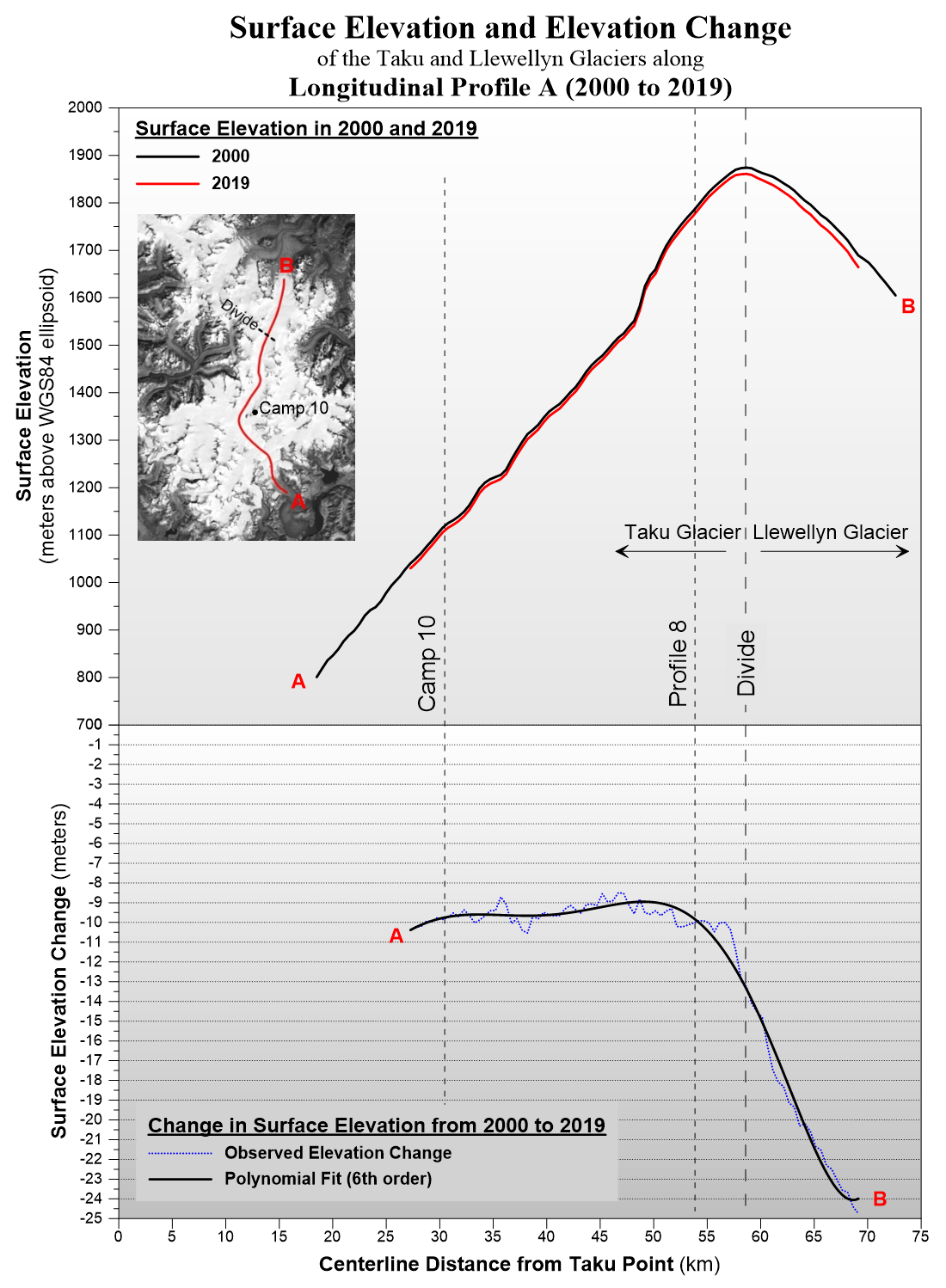
This is a static version of the animated graph above. This graph shows the individual annual (July to July) surface elevation change plots from 2000 to 2019. Throughout this time span, the range of year-to-year surface elevation change varied from 0 to -3 meters. The plots show a clear trend of decreasing surface elevation at the higher elevations, the Matthes/Llewllyn Divide, and down the Llewellyn Glacier. Of particular interest is the 2011-2012 surface elevation plot, which shows a strong positive surface elevation increase over the entire length of the profile, including on the Llewellyn Glacier north of the Matthes/Llewellyn divide. This was the result the 2010-2012 La Nina event which resulted in the unusually snowy winter of 2011-2012. This, combined with a cool and cloudy 2012 spring and early summer which limited ablation, resulted in surface elevation increases of between 1 and 3 meters. This was by far the greatest year-to-year thickening which we have measured on the Juneau Icefield. The graph below shows the cumulative surface elevation change from 2000 to 2019. This graph clearly shows the effect of decreasing surface elevation (and glacier thickness) at the higher elevations of the Taku/Matthes/Llewellyn system. Also of note, as evidenced by the 2000-2015 and later plots, is the increasing rate of surface elevation decrease (glacier thinning) over the entire length of the Longitudinal A profile since july 2014.
Download the annual
surface elevation change graph
| ||||||||||||||||||||||||||||



